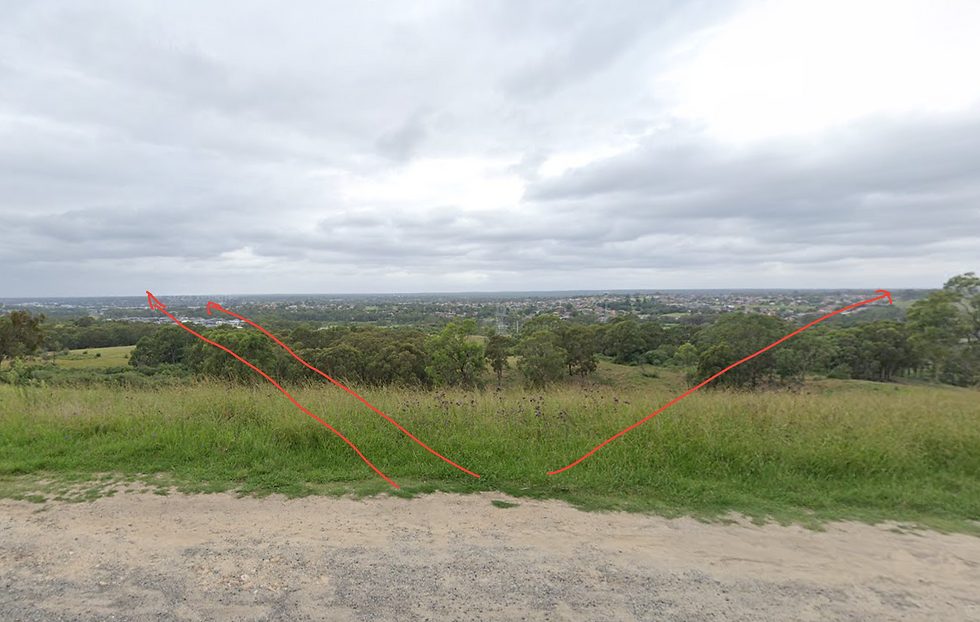The image above shows a fountain in Campbelltown. It was installed as a bequest from a controversial former local solicitor, who bequeathed $450,000 to Campbelltown City Council, for the construction of a fountain, to be located in a prominent position in Campbelltown and would reflect the ‘two great cities of the world, Rome and Campbelltown’. Subsequently, the lake within Marsden Park in Park Central was identified as an ideal location for the fountain. The fountain was commissioned on October 2009. A plaque acknowledging the bequest and naming the fountain is located on the banks of the lake.
What is not controversial, however should be any comparison between these two great cities. This article provides a discussion of the similarities.
History of Rome
Rome grew from pastoral settlements on the Palatine Hill and surrounding hills approximately 30 km (19 mi) from the Tyrrhenian Sea on the south side of the Tiber. The Quirinal Hill was probably an outpost for the Sabines, another Italic-speaking people. At this location, the Tiber forms a Z-shaped curve that contains an island where the river can be forded. Because of the river and the ford, Rome was at a crossroads of traffic following the river valley and of traders travelling north and south on the west side of the peninsula.
A place where a river intersects a significant other geographical feature eg. hill is a common place where a city forms.
History of Campbelltown
The history of Campbelltown can best be described in the book "Campbelltown - a bicentennial history" by Carol Liston (1988).
In some respects, the geographical location of Campbelltown for a city is not a strong as Rome's. Campbelltown is not directly located on a river like Rome is with the Tiber. While the Georges River is in somewhat close proximity, this river is not navigable for boats beyond Kentlyn Basin, meaning that early water supply was a difficult issue for Campbelltown in growing it's size and population. A reservoir was constructed in Campbelltown in 1838 for this reason, being one of the last structures constructed by convicts in NSW (see image below of archaeological relic).
In theory, if the Ancient Romans had occupied Campbelltown 2000 years ago, they could have constructed aqueducts from the Upper Nepean River, much in the same way that the Upper Canal, completed in 1888, secured Campbelltown's (and broader Sydney's) water supply.
As the Ancient Romans managed to build a civilization on more primitive energy sources including horse labour, human/slave labour, burning of wood and some water flow being converted to mechanical work, Campbelltown's development is really a product of the fossil fuel age, with the opening of the railway in 1858, using initially coal powered locomotives being a catalyst of the town's growth.
The town was proclaimed the City of Campbelltown on 4 May 1968 by the Hon Pat Morton, Minister for Local Government and Highways, marking the final stage in its transition from an isolated rural centre to a bustling satellite city. Also on this day, the railway made the switch from steam to electric power. Suburban sprawl around the former town has been delivered by exponential growth of cheap oil (probably not a good development strategy long term).
Geographical comparison
The seven hills of Rome are:
Aventine Hill (Latin: Collis Aventinus)
Caelian Hill (Collis Caelius, originally the Mons Querquetulanus)
Capitoline Hill (Mons Capitolinus)
Esquiline Hill (Collis Esquilinus)
Palatine Hill (Collis or Mons Palatinus)
Quirinal Hill (Collis Quirinalis)
Viminal Hill (Collis Viminalis)
The seven hills of Campbelltown can be seen below. These are:
Mount Annan
Kenny's Hill
Hill at the top of Raby Road occupied by St Gregory's college (name unspecified?)
Hill at the corner of Blaxland Road and Narellan Road (name unspecified)
Hill containing Old St Johns Catholic Church and Cemetery, Blaxland Road
Hill containing St Patrick's College, St John's Road
Mount Sugarloaf

Visual connection between several of these hills is shown in the image below.

Below is an image of the Palatine Hill in Rome.

Similarly with Rome, there are four major basilica, these are the John Lateran Basilica, St Peter's Basilica, St Paul Outside the Walls and St Mary Major.
Curiously in Campbelltown, the Roman Catholic Church seemed to purchased many of the best sites (some overlap with the seven hills described above).




The original St John the Evangelist Catholic Church was opened on 27 December 1826 and was added to the state heritage register in 1983. St Johns Roman Catholic Church and cemetery is of State significance for its associations with the Catholic Parish of Campbelltown, the second oldest parish in Australia. It is associated with the pioneers of the early Australian Catholic church, especially Father John Therry who designed the building. Construction of the masonry building was commenced in 1825 but it was not completed until 1841. It is thought to be the oldest masonry Catholic Church building in Australia. It is associated with James Ruse and Matthew Healy whose graves are located in the cemetery. (Heritage Office files).
A newer Church was opened in a more central location of Campbelltown in 1886, although unfortunately unsympathetic additions were added in 1964.
Conclusion
Both Rome and Campbelltown have many similarities in geography, natural/built history and cultural enlightenment. In some respects, Rome has a greater amount of built history, as the shift from hunter-gatherer society to civilization occurred around 26 centuries earlier in Rome.
Perhaps the biggest comparison between the two cities is that places of chaos can be found not far places of high cultural heritage.








Comments